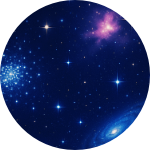 What are DSOs? - celestial treasures of the night sky What are DSOs? - celestial treasures of the night sky | 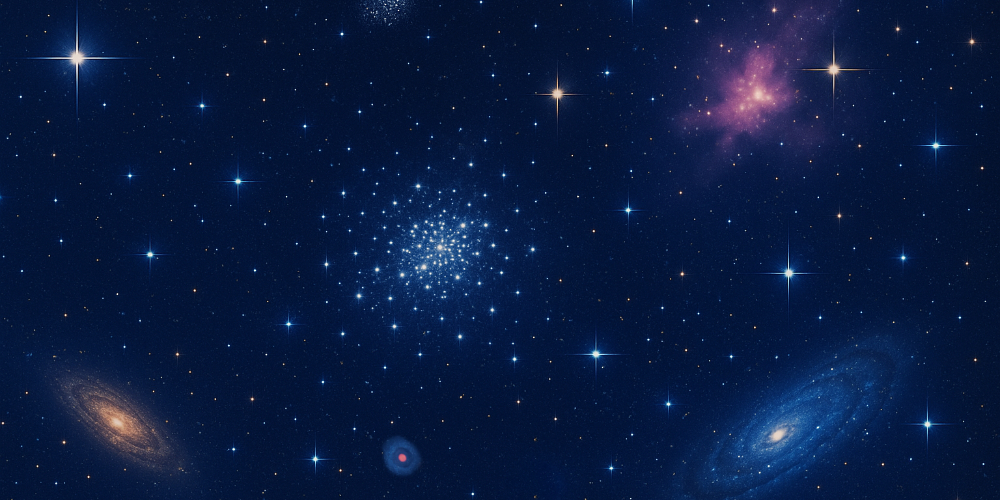 | DSOs, short for deep space objects, are celestial wonders that lie far beyond our solar system. They include nebulae, star clusters, supernova remnants and even other galaxies. These distant structures are often breathtaking in both size and beauty, offering glimpses into the vast and ancient architecture of the universe.
Observing DSOs is like time-traveling through a cosmic museum—each object tells a story about star birth, stellar death, or the gravitational choreography of billions of stars. Whether you’re admiring the delicate arms of a spiral galaxy, the glowing gas of a nebula, or the sparkling concentration of stars in a cluster, DSOs reward patience and curiosity with awe-inspiring views.
Many DSOs are available to stargazers with binoculars or modest telescopes, and each one offers something unique to discover. Here are details on the different types of DSOs available:
| DSO Type |
Description |
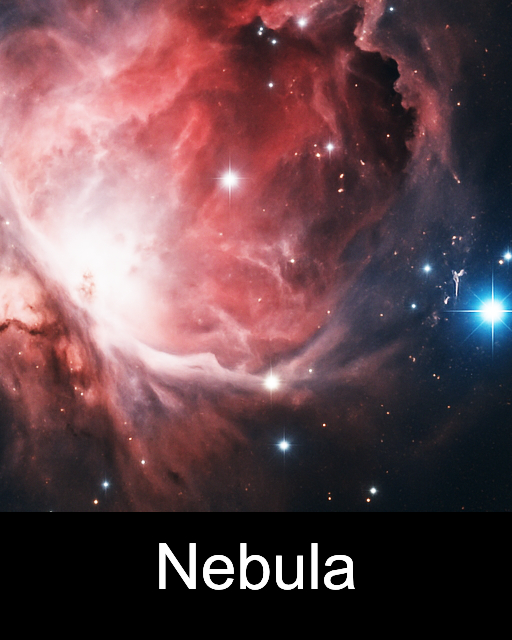
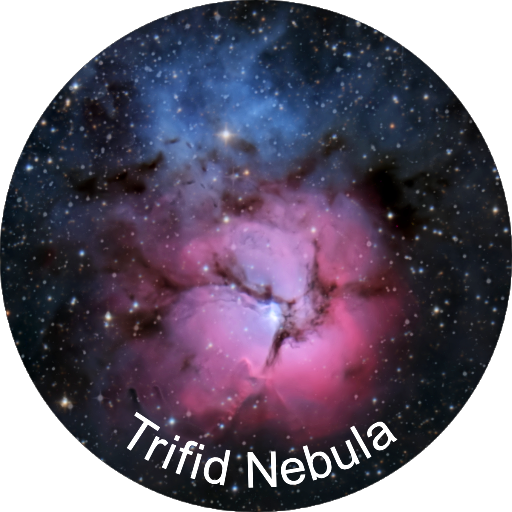 |
A nebula is a big cloud of gas and dust floating in space. They are the birthplaces of new stars. There are three main types of nebulae:
Emission Nebulae glow with their own light because they are heated by very hot, young stars inside them. The gas gets so energized that it lights up, often in red or pink colors. Emission nebulae are usually places where new stars are forming. A famous example is the Orion Nebula—you can even see it with binoculars on a clear night!
Reflection Nebulae shine by reflecting the light of nearby stars. They often look blue because blue light scatters more easily, kind of like why Earth’s sky looks blue. These nebulae are usually found near young stars and have a soft, dreamy look. The Pleiades star cluster is surrounded by a reflection nebula.
Dark Nebulae don’t glow or reflect light. Instead, they are so thick with dust that they block the light from stars and nebulae behind them. One of the most famous dark nebulae is the Horsehead Nebula, which looks like a dark horse’s head in silhouette against a glowing background.
A popular nebula, the Trifid Nebula (M20), is wonderfully unique because it combines all three types of nebulae -- pink emission, blue reflection and dark dusty wisps. Take a look!
|
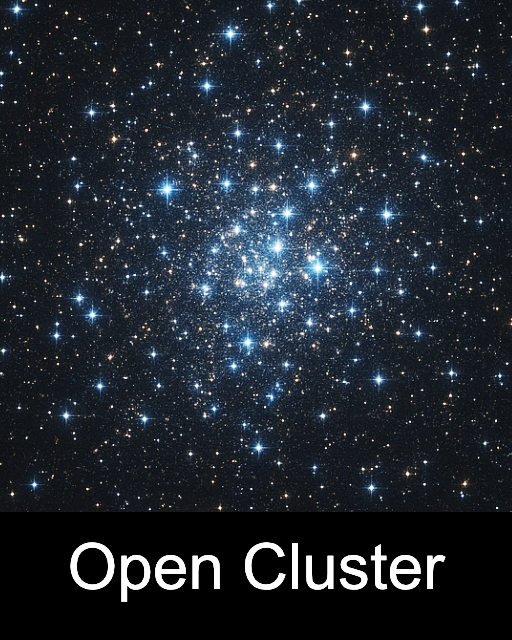 |
An open cluster is a group of stars that were born together from the same nebula. These stars are like a big family—loosely grouped and moving together through the galaxy.
Open clusters are usually young stars, often bright and blue, and they shine beautifully in the night sky. One of the most famous open clusters is the Pleiades, also called the Seven Sisters—you can even spot it with your eyes on a clear night! Through binoculars or a telescope, open clusters look like sparkling groups of diamonds scattered across the sky.
Open clusters are unique and captivating, each with its own special charm. Some clusters boast dazzling blue-white stars or feature cooler orange-red stars. Some clusters are densely packed with so many stars that counting them becomes a challenge, while others are sparse, with only a few dozen stars visible. These clusters reveal fascinating patterns of lines, arcs, triangles, and more, inviting us to engage in fun activities like connecting the dots and searching for hidden figures. |
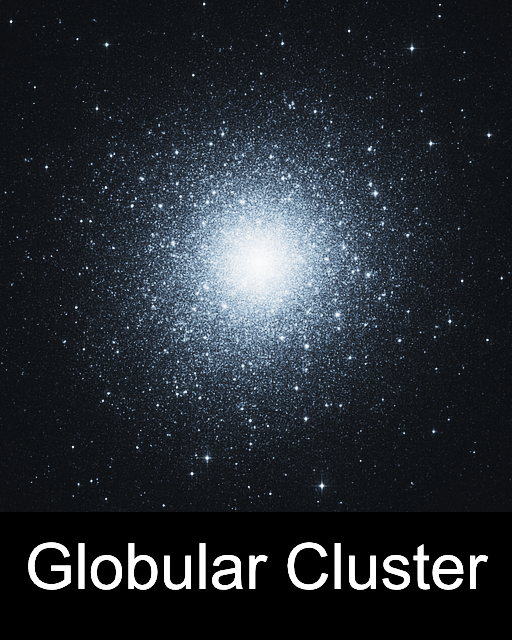 |
A globular cluster is a huge, round group of thousands to millions of stars that are packed tightly together in space. These stars are held in place by gravity, forming a beautiful, glowing ball of light. Globular clusters orbit around galaxies like our Milky Way, kind of like satellites, and they’re some of the oldest things in the universe—many are over 10 billion years old!
When you look at a globular cluster through a telescope, it can look like a fuzzy star at first. But with a bigger telescope, you start to see it sparkle with hundreds of tiny stars, like a cosmic snow globe.
Globular clusters are special because they help astronomers learn what the universe was like a long, long time ago. And for stargazers, they’re one of the most fun and dazzling sights to find in the night sky!
|
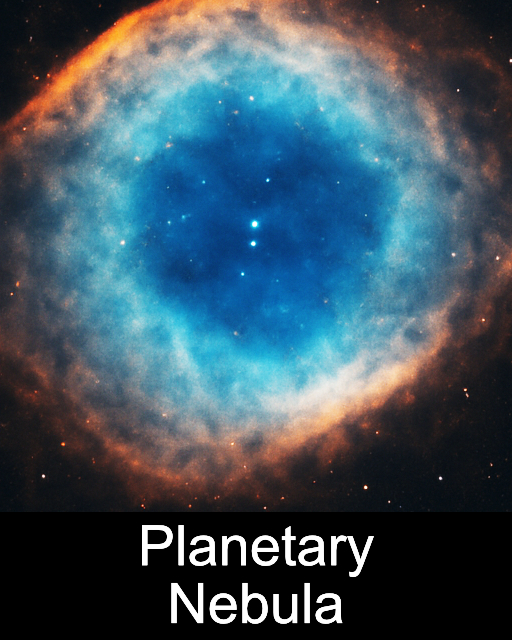 |
A planetary nebula is a beautiful but small cloud of glowing gas in space, created when a star—similar to our Sun—reaches the end of its life. Despite the name, it has nothing to do with planets. Early astronomers called them “planetary” because they looked round and smooth, like planets, through small telescopes.
As the star runs out of fuel, it sheds its outer layers into space. These layers form a glowing bubble of gas, lit up by the remaining hot core of the star, which becomes a tiny, dense white dwarf. Planetary nebulae come in many shapes—round, oval, or even butterfly-like—and they often glow in soft colors like blue, green, or pink. They only last a short time in the universe (just a few tens of thousands of years), making them a rare and special sight.
Looking at a planetary nebula through a telescope is like seeing a star’s farewell—a glowing sign of how stars like our Sun eventually fade away.
|
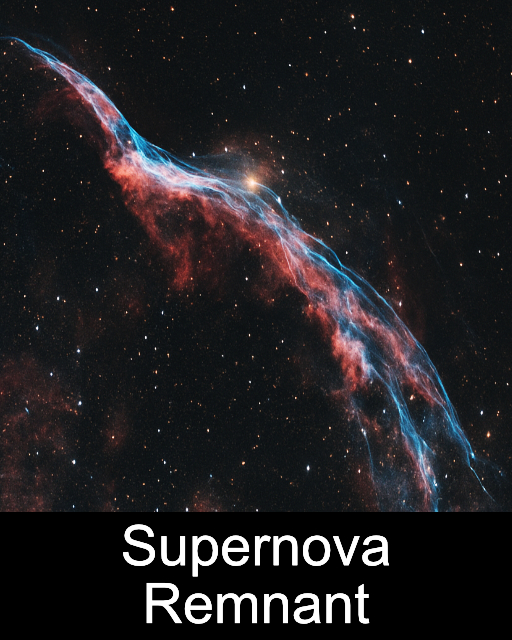 |
A supernova remnant is what’s left over after a massive star explodes in a powerful event called a supernova. When a big star runs out of fuel, it can no longer hold itself up, so it collapses and then explodes outward in a huge burst of energy. This explosion sends the star’s outer layers flying into space, creating a huge, expanding cloud of gas and dust.
This glowing cloud is the supernova remnant. It can look like a tangled web of light, with bright filaments and colorful shapes spread across the sky. One famous example is the Veil Nebula, which looks like a wispy ribbon floating in space.
Even though these remnants are the result of something violent, they are also incredibly beautiful. They shine for thousands of years and help create new stars and planets by spreading important elements like carbon, oxygen, and iron across the galaxy. In a way, a supernova remnant is a cosmic recycling center—where the death of one star helps give life to many others and make planets like Earth possible.
|
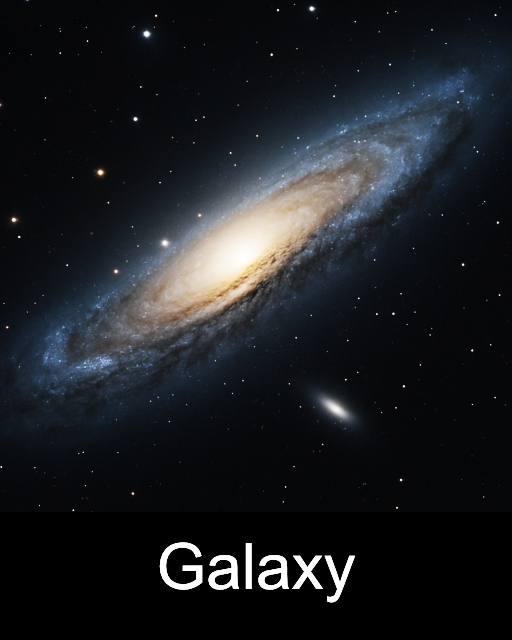 |
A galaxy is a huge collection of stars, planets, gas, dust, and dark matter all held together by gravity. Galaxies are like cosmic cities, each containing billions to trillions of stars!
Galaxies come in different shapes—some are beautiful spirals with arms that swirl around a bright center (spirals), others are round and smooth (ellipticals), and some are irregular and chaotic (irregulars). They can be small or giant, and they’re scattered all over the universe like islands in space.
When you look through a telescope, a galaxy might look like a soft glow or a fuzzy patch, but it’s really a place filled with billions of stars—some with their own set of planets. Galaxies are amazing because they show us just how big and full of mystery the universe really is. And the best part? We live in a spiral galaxy -- the Milky Way!
|
Night after night, the light from countless deep space objects arrives at Earth. This light has been traveling for thousands and even millions of years before ending its journey by triggering the rods and cones of our eyes. This means that we see deep space objects not as they are but as they were when the light started its journey. What are they like now? We can only wonder.
So take your time, and enjoy every encounter — the starlight has come a long way to meet you.
Clear skies!
| |
|
|



